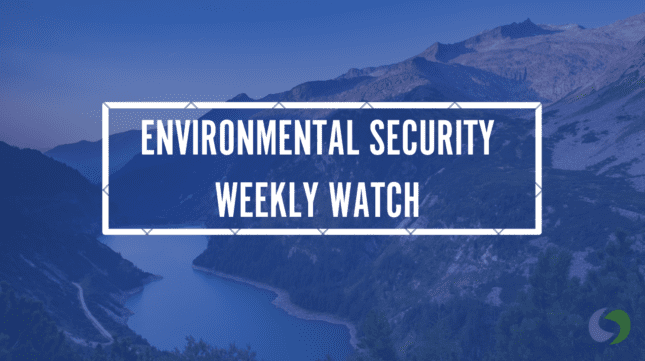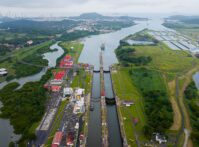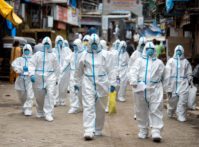-
Environmental Security Weekly Watch | July 14-18
July 18, 2025 By Madelyn MacMurray
A window what we’re reading at the Stimson Center’s Environmental Security Program
The World’s Children Face the Most Severe Impacts from Wildfire Smoke (Mongabay)
Evidence of the alarming impacts of wildfire smoke on child health is growing. Children’s developing lungs, faster breathing rates, and greater outdoor exposure make them uniquely vulnerable, and the threat is intensifying as wildfires grow more extreme, incinerating not just forests but urban areas, releasing toxic heavy metals and chemicals.
Each year, wildfire smoke contributes to the deaths of 270,000 children under five, while millions more face lifelong disabilities. A 2021 study that examined the deaths of more than 500,000 children found that 99% of the deaths attributed to smoke occurred in low and middle-income countries, with Nigeria, the Democratic Republic of Congo, India, Uganda and Indonesia accounting for 83%.
Solutions such as reducing agricultural burns, expanding air monitoring in low- and middle-income countries, and treating wildfire smoke as a public health crisis are within reach but demand urgent global action. Without it, rising temperatures will only deepen this silent epidemic, cutting short even more young lives.
READ | High Temperatures Threaten Maternal and Newborn Health–Climate Change Policy Must Adjust
Syria’s Civil Defense Forces Battle Wildfires while Reconciling with the Environmental Impacts of War (Al-Jazeera)
Wildfires along Syria’s Mediterranean coast have ravaged over 34,600 acres in the past week, exposing both the lingering scars of the country’s civil war (2011–2024) and new challenges for disaster response. Years of government neglect have eroded firebreaks, while international sanctions strain relief resources. Adding to the danger, more than 300,000 unexploded landmines, responsible for 369 deaths since December, hinder firefighting efforts. Yet amid the crisis, the fall of the Assad regime in late 2024 has brought a silver lining: improved coordination between provinces and greater freedom of movement for civil defense teams, offering hope for more effective wildfire response in the future.
READ | Climate Crisis Exacerbates Military Legacy Contamination
Wartime Mining in Myanmar Poisons Southeast Asia’s Most Important Waterways (The New York Times)
Unregulated rare earth mining in Myanmar, driven by profits amid the country’s civil war, is contaminating the Kok River and other waterways that flow into Thailand’s Mekong River. Toxic pollutants like arsenic, and potentially radioactive materials, have endangered over a million people, increasing risks of cancer and other health issues. Since Myanmar’s 2021 coup, mining has surged, with Chinese-operated mines in Wa and Kachin states exporting over $4 billion in minerals, all with minimal oversight.
Thai authorities, slow to alert affected communities, are now considering a dam to trap sediment and the Mekong River Commission is planning a late July field visit to assess the contamination. The pollution threatens Southeast Asia’s vital Mekong River, highlighting the urgent need for regional action.
READ | Tracking China’s “Foul and Filthy” Rivers With Citizen Science
Sources: Al-Jazeera, Mongabay, the New York Times, Planetary Health
 A Publication of the Stimson Center.
A Publication of the Stimson Center.








